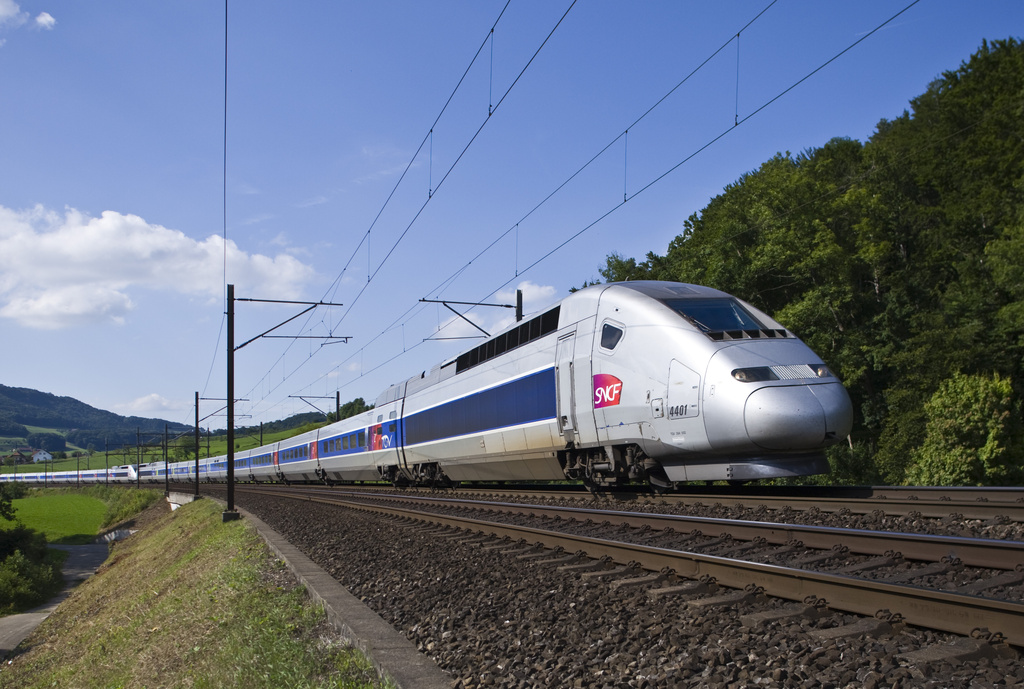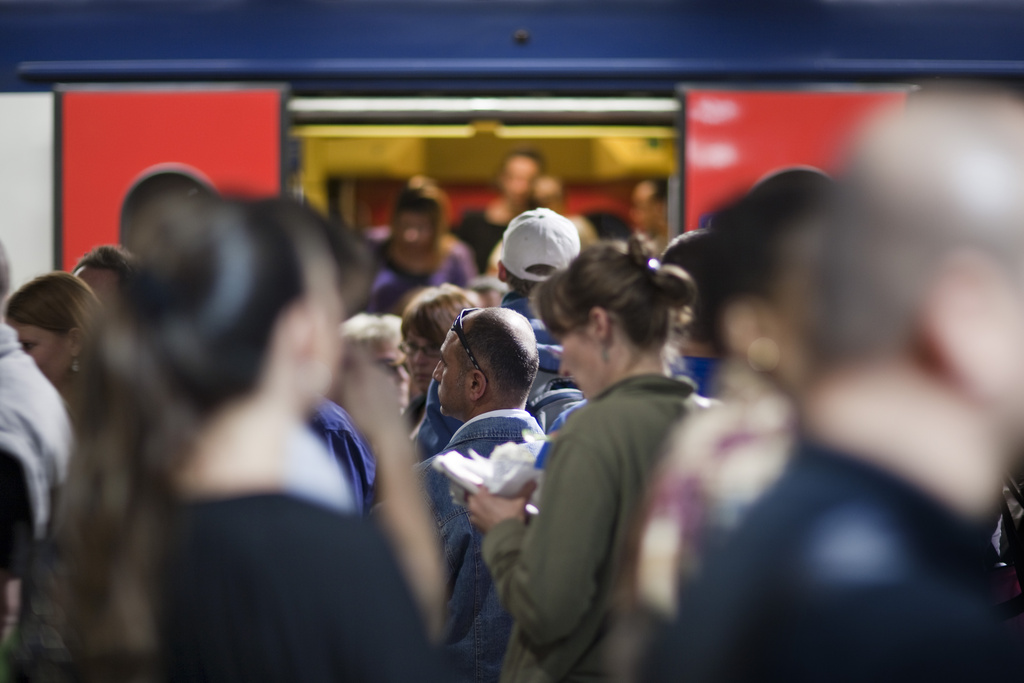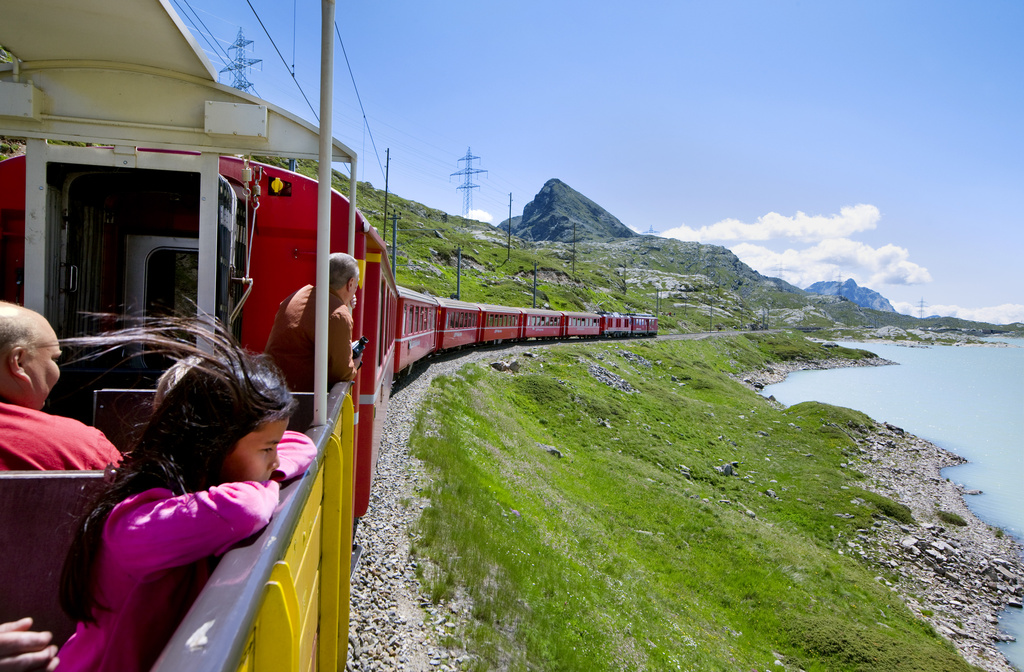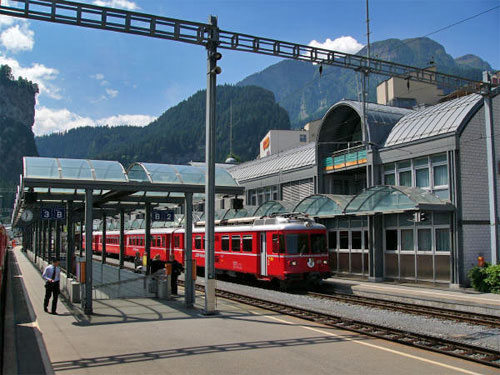French-Swiss TGV service blows out 30 candles

The high-speed TGV (train à grande vitesse) rail link between Paris and Geneva is this week celebrating its 30th birthday.
The TGV service, which now also connects the French capital with Basel, Zurich, Lausanne, Neuchâtel, Bern and Brig, has revolutionised travel between France and Switzerland.
For the Swiss authorities the expansion of the TGV service to Switzerland has been a real success story.
“On the whole our assessment is a positive one. Switzerland is in the heart of Europe and needs to have good permanent rail connections with its neighbours,” Federal Transport Office spokeswoman Florence Pictet told swissinfo.ch.
Over the past 30 years train journey times between Switzerland and Paris have been slashed dramatically – down to three hours five minutes to Geneva, three hours 27 minutes to Basel and four hours 36 minutes to Zurich.
“The Paris-Geneva line is historically one of the first TGV lines and extremely important from an international perspective,” said Alain Barbey, director general of the SNCF subsidiary TGV Lyria.
“Last year we carried one million passengers, up 20 per cent; it accounts for 45 per cent of all TGV traffic between France and Switzerland, but it’s not the most profitable as it’s very expensive to operate.”
Sylvain Meillasson, an independent rail expert, said that by providing a faster alternative to flying, the TGV had proved to be a saviour to the French and Swiss rail networks.
“There was stiff competition from airlines based in Zurich, Geneva and Basel, and it’s clear that the TGV offered attractive prices and new benefits of travelling by rail,” said the rail journalist.
The French-Swiss marriage is full of contrasts but also complementary, he added. The French TGV is driven by technology and commercial aims, while the Swiss rail model is more political and ultimately decided by the Swiss people.
Ongoing expansion
The service meanwhile continues to expand. A new 140-kilometre high-speed Rhine/Rhône link between Mulhouse and Dijon in eastern France, inaugurated on September 8, is seen as an important stage in Switzerland’s connection to the European rail network.
When the service opens on December 11, 30 minutes will be shaved off the current travel time between Zurich/Basel and Paris.
The Swiss government contributed some SFr100 million (€82 million, $111 million) to the construction of the rail line, which cost an estimated €2.3 billion.
Swiss Transport Minister Doris Leuthard, present at the inauguration, welcomed the new line. Canton Jura officials are also happy as it should make their isolated region more accessible and attractive to visitors and cross-border workers.
French President Nicolas Sarkozy has announced that the French state will finance the re-opening of the line between Delle, on the Swiss-French border, and the French TGV stop at Belfort, planned for 2015.
This will allow an onward connection to Bienne and reduce the travel time from the Swiss town of Porrentruy in canton Jura to Paris to two hours 45 minutes.
People’s programme
The new Rhine/Rhône TGV link is part of a Swiss programme to improve rail links between Switzerland and France (Paris and Lyon) and southern Germany (Stuttgart and Munich), which was approved by voters in 1998.
Under the scheme, the Swiss authorities are investing SFr1 billion in time-saving infrastructure upgrades by the end of 2015.
A large share of the work on the western side has now been completed, including the Bellegarde-Bourg-en-Bresse link west of Geneva, and the Vallorbe/Neuchâtel-Frasne-Dijon line. Work is continuing on links in eastern Switzerland and on the electrification of the Lindau-Geltendorf stretch of the Zurich-Munich line, which aims to cut the journey time by 40 minutes.
On the north-south axis the New Rail Link through the Alps project, which includes two new major tunnels and high-speed rail links, the Lötschberg, which was opened in 2007, and the Gotthard, expected to open in 2017, can shave one hour off the travel time between Bern and Brig and Italy.
Not a priority
Pictet said under future plans high-speed rail connections would not be a priority, however.
“We will be much more focused on the Swiss network where there are capacity problems and work is needed to ease busy rail junctions,” she noted.
Rush-hour overcrowding has become problematic in urban areas with half of the 900,000 customers who take Swiss trains every day doing so during morning and evening rush hour.
By 2030 demand for rail transport within Switzerland is due to increase by 50 per cent and by 100 per cent in urban centres around Zurich and along the Lake Geneva corridor.
Since the inauguration of the first connections – Geneva-Paris and Lyon-Paris – on September 27, 1981 some 1.7 billion travellers have taken a TGV on France’s 1,900km high-speed tracks.
The network has expanded significantly with new lines running to the north, south, east and west. Trains now race along at up to 300-320 kilometres per hour, up from 260km/h, although the average operating speed ranges from 160-245km/h.
In 2010 some 2.3 million passengers took a TGV between Switzerland and France, up seven per cent on 2009.
The French Railways (SNCF) are accused of neglecting regional lines in favour of the TGV.
Today only 30 per cent of high-speed rail lines are said to be profitable partly due to fees paid to the rail network operator Réseau ferré de France (RFF). The French state has promised to continue supporting the future development of the TGV.
Four new lines have been launched since 2007: Paris-Tours to the Spanish border, Brittany-Loire Valley, Rhine/Rhône east and Languedoc-Roussillon towards Spain.
Swiss connections to the TGV network are managed by Lyria, a company owned by Swiss Federal Railways and the SNCF.
TGVs connect Paris to Geneva, Lausanne, Basel, Bern, Neuchâtel, Zurich and Brig.
Switzerland is also connected to the German and Italian high-speed networks.

In compliance with the JTI standards
More: SWI swissinfo.ch certified by the Journalism Trust Initiative


















You can find an overview of ongoing debates with our journalists here . Please join us!
If you want to start a conversation about a topic raised in this article or want to report factual errors, email us at english@swissinfo.ch.